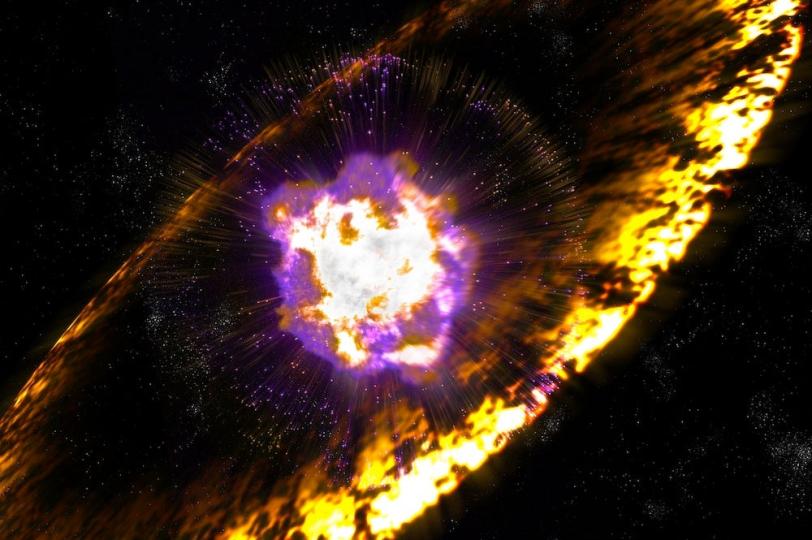SLAC Research Makes Science Magazine's Top 10 of 2013
Editors of the journal Science, published by the American Association for the Advancement of Science, have selected their annual Top 10 Science Breakthroughs of the Year. On the list: Work by SLAC researchers pinning down the origin of cosmic rays.
Editors of the journal Science have selected their annual Top 10 Science Breakthroughs of the Year. On the list: Work by SLAC and Stanford researchers pinning down the origin of cosmic rays.
In the 101 years since cosmic rays were discovered, the nature of these extremely energetic particles – mostly protons – has been established, but not where and how they gain their immense energies. Astrophysicists suspected they come from the remnants of supernovae, the violent deaths of massive stars many times the size of the sun. But cosmic ray particles have electromagnetic charges, which means they get yanked back and forth by the magnetic fields of any stars they whiz past. Tracing them directly back to their point of origin has been impossible.
In February, researchers led by Stefan Funk of the SLAC/Stanford Kavli Institute for Particle Astrophysics and Cosmology announced they'd taken a different tack. Using data from the Fermi Gamma-ray Space Telescope, they traced the paths of certain gamma rays, which are neutral and thus not deflected by magnetic fields, back to their origins in dense gas clouds near a particular supernova remnant. The gamma rays were of very specific energies and could only have come, in a stepwise fashion, from cosmic ray protons, thus confirming the origin of galactic cosmic rays.
Contact
For questions or comments, contact the SLAC Office of Communications at communications@slac.stanford.edu.






